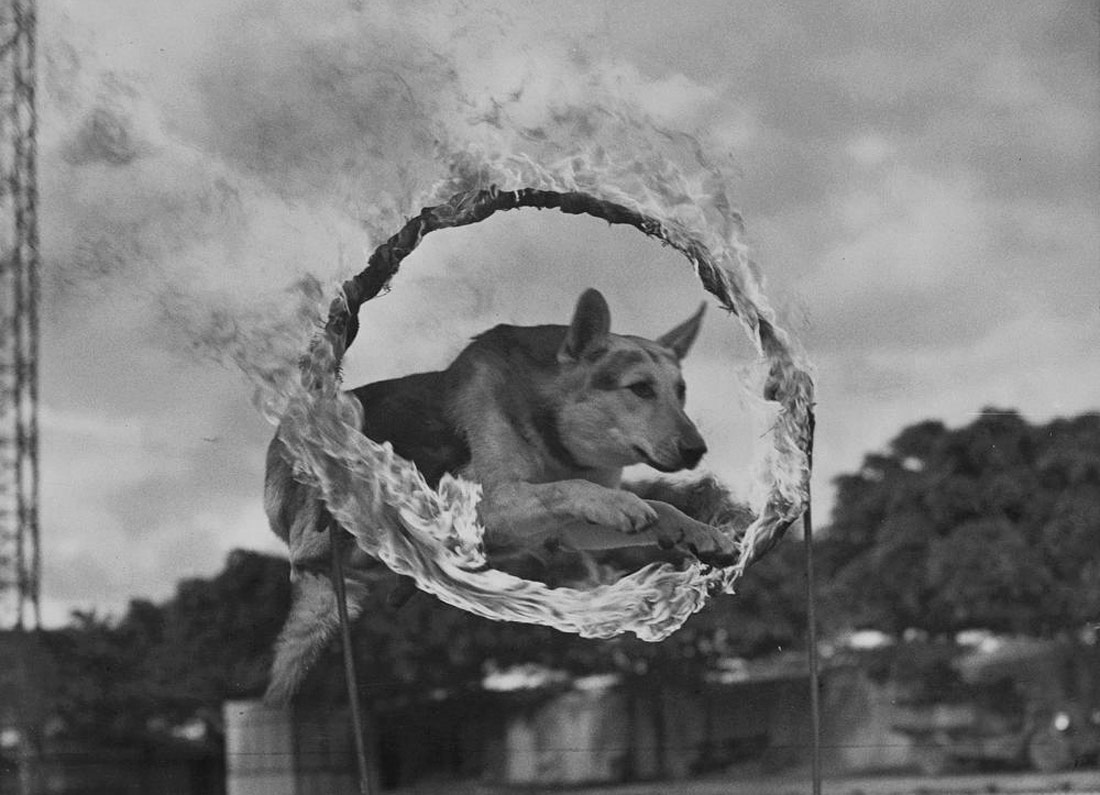
Trick dog jumping through a ring of fire, Queensland | George Jackman, State Library of Queensland | Public Domain
The second part of this series on quantum physics analyses and provides examples of the paradoxes that emerge from a clash with intuition or with the established order and that led to a crisis of fundamentals. Some of these paradoxes, such as the stability of atoms or the ultraviolet catastrophe, are based on errors of intuition, on assumptions that are too generous with our objects of study. Then there are those, such as the double-slit paradox, whose resolution is related with a new definition, a reconsideration on the nature of objects. Finally, as with Schrödinger’s cat, once the new system is adopted, it is recommendable that we prepare ourselves for some further surprises on how we understand the world.
Paradoxes are thrilling. They are a spiral into which one must enter alone. Their charm cannot be shared with anyone else. They are a direct, intimate, non-transferrable challenge. When something needs all our attention and nobody can help us, it’s almost certain that we’re up against a vicious circle or a paradox. It could also be that we are looking at the Minotaur’s Labyrinth or the destruction of Medusa, which while not paradoxes, do share at least one characteristic with them: the solution always involves a profound change in the system, a revolution, a fallen king, a world understood or explained in a radically new way. A paradox is an endless spiral, and therefore to escape it, one has to escape the world and create a new one. When a paradox appears, after a while enjoying ourselves weightlessly in its sweet senselessness, we rub our hands because it announces a new order and a different perspective, a reference to be used for the first time, a well-defined system that helps us and pulls us out of the current. A paradox announces a new order. And as a new order, it may involve things that we are absolutely unprepared for…
The new order in numbers
One of the most famous mathematical paradoxes is Cantor’s paradox (Georg Cantor, the father of sets theory, discovered it in 1899) which starts by proposing to call the set of all sets C. Up to this point, nothing to rock the boat. A set is something that we all understand intuitively, and the set of all sets seems to be an inoffensive object. Now comes the question that, after some time reflecting, dresses us up in our helmet and shield, cape and Roman sandals, blurring the surrounding world and leaving us in facing it with all the responsibility weighing down on our shoulders: What is the size of C? Well, as C contains all the sets, it is the largest set possible. Specifically C contains itself ,which is no problem for logic, and it also contains all the sets that can be formed with elements of C, which is a problem, because the set of subsets of any set is always greater than the set! The Beatles are four, but the set of subsets formed with elements of the Beatles is greater than 4: John with Paul, Paul with Ringo, Ringo with George, George with John and Paul… and so on up to 15 possible musical sets; not all as promising as the original, it is true. Therefore C is larger than itself and C is also smaller than itself! It’s impossible to imagine anything more paradoxical! Being bigger than oneself is already sufficiently extraordinary to enter the world of impossible objects, without on top of that being – at the same time – bigger than oneself and smaller than oneself! Or perhaps more dramatically: being simultaneously bigger and smaller than another thing is sufficiently extraordinary to enter the world of impossible objects, without that thing being oneself! So, that’s enough weightless enjoyment! Let’s go to the solution that will lead to a change of perspective, a new order, a fallen king that gives way to another king: we solve the paradox by declaring that C, the set of all sets, does not exist.

The Beatles. New York, 1964 | Library of Congress | Domini públic
The truth is that as a radical change it seems to be a little disappointing. What king falls if we say that the set of all sets does not exist? What turnaround in perspective? What novel order? But it is only disappointing on first sight. The revolution that is waiting behind Cantor’s paradox consists of acquiring the (new) capacity of prohibiting the existence of certain sets. That a set has a good appearance, that its construction is intuitive, ceases to be a criterion to accept its existence. This capacity to issue validity certificates for sets (backed by the proliferation of paradoxes and antinomies in various mathematical fields) led to the formalisation and axiomatisation of mathematical reasoning itself, which to date only existed to formalise other things. Which in turn produced a crisis of fundamentals and as a consequence, a series of problems of circular appearance from which unfortunately we cannot emerge. Once the formal system created to talk about a world with propriety and avoid creations is axiomatised, these axioms are incapable of producing or revising all the truths of that world. In summary: a paradox caused a revolution that led to the demonstration without ambiguities that the reach of mathematical knowledge is not as great as we believed. In other words, the capacity to formalise and inspect the truth in the world of numbers has a limit. However strong a system that validates sentences, if we want it not to house pits that lead us to contradictions, a true proposition will always exist that escapes its competence.
The intention of the previous paragraph is to demonstrate (1) that some types of paragraph are based on errors of intuition, in assumptions that are too generous regarding our objects of study, (2) that their resolution is related with a new definition, a reconsideration on the nature of such objects, and (3) that once the new system is adopted, it is recommendable that we prepare ourselves for a few more surprises. Finally, the previous paragraph serves as preparation for the paradoxes of quantum physics, which also were born of a clash with intuition or with the established order and resulted in a crisis of fundamentals. Only this time the crisis was not declared in the world that orders numbers – more or less abstract objects depending on each person’s philosophical position – but in the world that orders the things that we touch and the things that we are.
The new order in atoms
In the history of quantum physics three types of paradox exist: those that challenge classical physics; those that challenge intuition and common sense; and those that challenge quantum physics itself.
The first give evidence that classical physics is failing in some predictions; the second provide evidence that intuitions born from our contact with the world fail in some predictions; and the third (built to test the consistency of the new theory) we are not quite sure yet of what they evidence, but with those terms we an augur that the earth will tremble.
The first are resolved with a change of theory; the second are resolved with a Copernican revolution in certain preconceptions regarding physical objects and their properties; the third I insist on the fact that we do not know how to deal with them, since the Copernican revolution that has just offered us a new order of things free of attacks against the intuition, leaves us with the fact that this new order of things imposes important restrictions on the limit of what we can come to know.
Examples of type 1 or “reality clash” paradoxes
An example of the first type of paradoxes is the stability of atoms. In effect, classical physics is not capable of explaining how it is possible for atoms to be stable. In other words, it is not capable of explaining that all things are here. Classical physics describes atoms as a system of positive nuclei and electrons revolving around them. But according to that same physics, any charge in movement emits energy (an example is a radio antenna). Therefore, an electron moving around an atom should lose its energy and fall into the nucleus. As that is not what is observed, the prediction of classical physics fails on that point and a new theory takes over. The new theory proposes as a solution to the paradox that electrons do not revolve around the nucleus, but rather that they are found in some place close to the nucleus in certain stable energy states, without their position and speed being determined exactly at any moment in time. Thus, one avoids describing the electron of an atom as “a charge that moves at a defined speed and a certain distance from the nucleus” and it is described as what is deduced from the observation “a charge that is close to the nucleus and does not lose energy”. “Where it is” or “what speed it has”, with all their intuitiveness, lose importance as prime descriptions of the electron. In contrast, the “stable energy status”, as a physical concept, is not at all intuitive, but it is necessary to satisfy the observation. This ad hoc solution, which blurs the concepts of position and speed, will lead among other things to the Heisenberg uncertainty relationships: the product of the uncertainties of position and speed of a quantum object is always above a certain number, the Planck quantum constant: the position and speed of a particle cannot be known simultaneously with infinite precision. But again, the intention of these changes was to be able to explain an unanswerable observation: the stability of atoms.
Another example of a paradox of the first type is the ultraviolet catastrophe According to classical physics, any body in thermal equilibrium with its environment absorbs or emits energy in the form of electromagnetic radiation, so that corresponding to every form of vibration is a certain quantity of energy. It is as if a certain quantity of music had to sound at each note. This is the principle of equipartition of energy, according to which there corresponds to each mode an energy equal to k·T (Boltzman constant multiplied by temperature). But then, how is it that we do not irradiate an infinite quantity of energy? Specifically, how is it that we are not a source of light, of ultraviolet rays, of x-rays? To solve the paradox, the new physics ruled that the energy irradiated at each frequency could not be arbitrarily small, but rather that it came in minimum packages, which were called quanta (quantum in the singular) in a size proportional to their frequency (again, proportionality is the Planck constant). When the quantum of minimum energy for a mode is greater than k·T (the energy it would correspond to the body to emit in that model), emission at that frequency cannot exist. The term quantum is the origin of the name that was taken by the new theory when it was consolidated: quantum physics. Subsequently, the quantum of electromagnetic energy was called photon.
If what needs to be accepted to explain the world is that energy values are quantified and that the properties (position, speed) of the particles are not determined at the same time, it seems to be a good deal. The world seems a little stranger, but ultimately, understandable.
Examples of type 2 or “counter-intuitive” paradoxes
However, from this deal emerge paradoxes of the second type which are the ones that, once the terms of the new theory are accepted, present situations that clash with common sense. The resolution of these paradoxes definitely does need a Copernican revolution.
One example is the double slit experiment. If we accept that light, visible electromagnetic radiation, is quantised and formed by a series of “indivisible packages” called photons, how can we explain the interference bands that we observe when we make it pass through a double slit open in a wall? If light is a wave, we understand the interference well as we observe similar phenomena in water. But if we accept that the light is formed by individual photons, we have to conclude that the phenomenon of interference occurs on an individual level and that one same photon passes through the two slits at the same time and interferes with itself to give rise to that characteristic bands pattern. This paradox can be resolved with the following Copernican revolution: it is necessary to distinguish between the state of the photon (the information that describes it) and the list of its observable properties. Above we have already noted this, but now we have to accept it with all its consequences. It is a Copernican revolution because, in classical physics, the information that an object contains coincides with the list of its observable properties. But in quantum physics, it is possible that the state of the photon is perfectly determined and even so, the observable property of “what path the photon has taken” does not emerge until after conducting an experiment to ascertain it. If a photon can find itself on path 1, and can also find itself on path 2, then it is also possible for it to be in a state of superposition of the two paths. Unless we do an experiment to determine which path it has taken, the photon “will take both paths at the same time” and will interfere with itself. At the moment at which we place a detector in the slits to find out through which one it has passed, the photon “decides” on one of the paths and the interference is destroyed.
Superposing (or entanglement, which we will talk about in future articles) are phenomena that challenge an intuition built through the contact with the macroscopic world, but we can come to consider a Copernican revolution in order to build ourselves a new intuition. The revolution invites us to not concentrate the physical task on the description of objects (atoms, electrons, photons, etc.) and their properties. In its place, it considers that the fundamental units of the world are the bits of information contained in those objects, and that the task of quantum physics is to determine which are the rules for accessing, copying and transmitting that information.
Examples of type 3 paradoxes or “theory stress testing”
Once the Copernican revolution is adopted, the third type of paradoxes appears: those designed to test the change of paradigm that quantum physics proposes. One of them is the Einstein-Podolsky-Rosen paradox which we will discuss in the future, as the solution is acceptable within the system and also, it would force us to talk about entanglement and we already sufficiently tangled up with all this.
In this context, more interesting is the “stress test” paradox of Schrödinger’s cat. It is interesting because it is not clear how we are going to get out of it, nor even if we are going to get out of it. Schrödinger’s paradox is a high-stake gamble on its double slit counterpart. Let’s accept that a photon can pass through two places at once. Previously we have said that we solve the paradox by proposing that before the measure, the properties (through which slit the photon has passed) are not determined. And that they only emerge when we incorporate a detector. But, Schrödinger asks, what privileged characteristic does the detector have to make the photon decide its path? And what if we do not look at the detector? What if the path that the photon takes is somehow connected with a property of another object, let’s say a cat, and it does not make sense that it can have two values at the same time, let’s say: being alive and dead? If path 1 causes the emission of a poison and path 2 does not, and we close the entire experiment in a box in which we put a cat, the superposing of the photon maintained by the fact that we do not look along which path it is going is passed on to that of the cat. The problem that the paradox reveals, the problem of measure, is that we do not know at what time, by virtue of what, a photon or similar quantum particle may “decide” to abandon its superposing and plump for one of the possibilities. How do se separate a quantum system from the apparatus that measures it? What is the boundary between the classical and the quantum?
This question is not resolved, it is not clear that it is a resolvable paradox any more than a demonstration that we cannot describe the world in a definitive way. There is no evident limit for the maximum size of a “Schrödinger’s cat”.
But precisely here is the good news. There is no evident limit for the maximum size of a “Schrödinger’s cat”! That implies that increasingly large objects can be in quantum superposition! Nothing fundamental prevents it. So let’s sharpen our screws and prepare therefore to give a welcome to the Schrödinger’s cats in the form of quantum computers, measurers beyond the limits of precision, 100% secure messaging methods… macroscopic objects enjoying the quantum characteristics of tiny particles!
“On the banks of the Rhine, a beautiful castle had been standing for centuries. In the castle’s cellar, an intricate network of webbing had been constructed by the industrious spiders that lived there. One day a strong wind whipped up and destroyed their web. Frantically, the spiders worked to repair the damage. They thought it was their webbing that was holding up the castle.”
Morris Kline, Mathematics. The Loss of Certainty (1980)
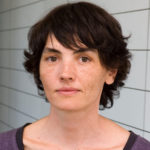
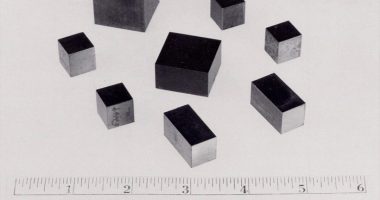
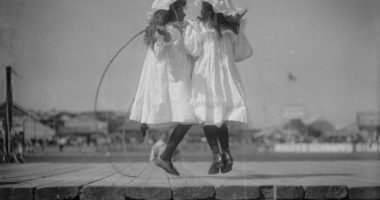

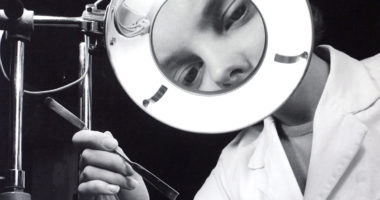
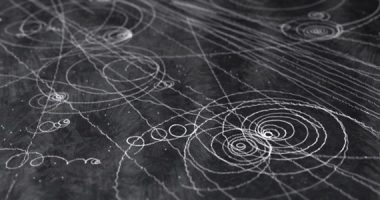
Jose Garrigues Baixauli | 11 July 2018
“Pero según la misma física, cualquier carga en movimiento emite energía (un ejemplo es una antena de radio). Por lo tanto, un electrón moviéndose alrededor de un átomo debería perder su energía y caer al núcleo.”
Efectivamente “cualquier carga en movimiento emite energía”. Pero como toda regla tiene su excepción.
“Cualquier carga en movimiento emite energía”, excepto que esté en el estado de mínima energía. Que es precisamente lo que le ocurre al electrón en el átomo de hidrogeno.
Claro que para ello hay que saber calcular, la masa y la carga del electrón, la constante de la ley de Coulomb, la constante de Planck y la velocidad del electrón en estado libre. Precisamente, la velocidad del electrón en estado libre coincide con la velocidad del electrón en el átomo de hidrogeno.
El electrón en el átomo de hidrogeno, tiene un momento angular mínimo que no puede perder y por lo tanto no puede acercarse al núcleo
En el átomo de hidrogeno, se puede calcular todo, masas, cargas, constantes, velocidades, radios, distancias, etc.
Lo único que no se puede calcular son las coordenadas x y z, ya que no hay ninguna ecuación física que dependa de las coordenadas. Todas dependen de la distancia.
La distancia del electrón al proton y el momento mv están determinados.
Por lo tanto “todos los electrones giran alrededor del núcleo”.
La indeterminación de Heisenberg es una limitación que nos impone la naturaleza, al igual que la velocidad de la luz. Los electrones y los fotones, tienen un momento h que no pueden perder, pero si transmitir a otras partículas.
Cualquier carga en movimiento emite energía si su momento angular es (n+1h, con n=1 2 3 ….. En las antenas, n es mucho mayor que 1
El problema es que solo sabéis medir, pero no sabéis que estáis midiendo
Jesús | 21 August 2018
Pues como tú dices, donde una paradoja nos enfrenta con la razón debe de ser porque algo no hemos entendido bien de la realidad. La razón correcta no debería conducirnos a paradojas, y eso significa que algo está profundamente confundido en la física cuántica, ¿pero qué?
El experimento de la doble rendija siempre se cuenta con una lógica que parece incuestionable, concluyendo en que las contradicciones tienen que ser parte de la realidad. Pero no, el error está en la lógica que se aplica, y creo que la pista correcta está en lo que sigue…
Se interpreta que las partículas proyectadas responden como una onda si no hay detector, y dicen que así se demuestra porque al proyectar de una en una sigue saliendo un patrón de interferencias. Si cada partícula proyectada es como una onda, no hay razón para que no suceda lo mismo con cada partícula de la pantalla de fondo, con cada uno de los átomos que pudieran atrapar a la partícula proyectada.
Así el problema se da la vuelta por completo. Ya no se trata de la probabilidad que una partícula tiene de acabar en una o en otra posición, se trata de la probabilidad que tienen los átomos del entorno de capturar a la partícula proyectada, y eso no cambia aunque se proyecten partículas de una en una, porque siempre habrá millones de átomos en superposición cuántica (ondas) creando interferencias. El patrón de interferencias no se debe a la partícula proyectada sino al entrelazamiento que mantiene con todo a su alrededor.
Superposición… ¿solo en la partícula que se mide? ¿Y el resto qué pinta?
MARY | 27 October 2018
DESDE YA LES DOY GRACIAS POR REFERIR PERSPECTIVAS DESDE BASES DE ESTUDIOS CIENTIFICOS.LA PARADOJA LETAL ES LO QUE TERMINA DANDONOS NOMBRE.EL QUE MIDE,EL HOMBRE,SE SONROJA ANTE LA INTUICION PRAGMATICA DE LA CUANTICA
Ruben Bronstein | 16 June 2020
El problema de las paradojas cuánticas radican en que las partículas bajo análisis se encuentran en la frontera tridimensional; veamos, sabemos que los fotones tienen la velocidad máxima del universo y ésta velocidad UNICAMENTE esta en el límite tridimensional; porque, realmente de acuerdo al proceso constructivo y acertado de la formula de la relatividad de EINSTEIN toda partícula incrementa su masa hasta el infinito al aproximarse a la velocidad de la luz … en palabras vulgares la partícula comienza a distorsionar su entorno hasta el límite de dejar de existir tridimensionalmente .. en palabras físicas la partícula aumentando su velocidad distorsiona tanto las variables de espacio-tiempo que LA MISMA PARTÍCULA “intenta coexistir” en 2 espacios y al mismo tiempo!!! .. la luz tiene a su disposición EL MAR DE LAS POSIBILIDADES porque se encuentra en TODAS SIMULTÁNEAMENTE, la luz es la única forma material tridimensional que se encuentra en el límite interdimensional; lo que ocurre finalmente, es que tridimensionalmente nuestro “medidor” toma SOLO una de las posibilidades debido a nuestra condición física de 3 dimensiones; esto hace que la partícula se defina hacia nuestra perspectiva, tomando la alternativa “mas conveniente” de acuerdo al entorno y circunstancias variables externas que influyen, NO podemos instrumentalmente acceder a operar en ése límite dimensional … así las cosas detrás del límite tridimensional está un universo tetradimensional cuyas posibilidades ya alcanzamos a PERCIBIR en ESTOS ENSAYOS pero obviamente NO PODREMOS entenderlos correctamente si usamos nuestra física tridimensional; actualmente realizo un ensayo muy complejo de éstos y muchos más fenómenos perceptibles tetradimensionales apoyados en lógica, matemática y geometría PRIMARIA todavía, pero es SORPRENDENTE!!! y para mí la nueva vía de desarrollo y que tarde o temprano nos llevarán a tecnologías que recreen comportamientos tetradimensionales; incluso equipos que nos permitan observar a todos y a TODO segundo a segundo desde su nacimiento; la historia de la tierra y de éste universo a traves de un visor temporal .. interpretando las densas formaciones del universo tetradimensional que no son más que TODA nuestra historia universal compactada en un mundo extraño inaccesible físicamente pero ACCESIBLE tecnológica, física, geométrica y matemáticamente .. el final de TODO el mal en la tierra pero también EL FINAL de la privacidad individual .. el maravilloso conocimiento de nuestros caminos acertados y errados por VENIR!!!
Ronald | 25 February 2022
Muy bueno
Leave a comment